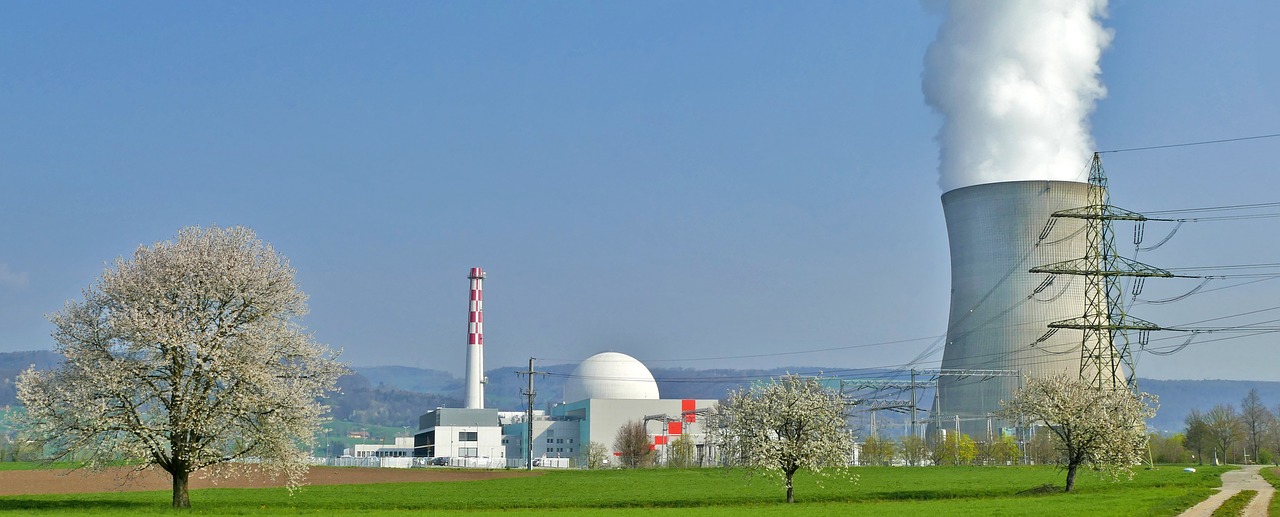As a former Chairman of the UK Atomic Energy Authority, I believe nuclear power has an important role to play in the world’s energy supply. It is a consistently reliable, safe, and carbon-free form of energy that can help countries meet their climate goals and power their economies.
Globally, nuclear power provides about 10 percent of the world’s electricity from around 440 reactors, according to the latest figures from the World Nuclear Association. Although there is increasing interest in smaller modular nuclear reactors, large nuclear plants with multiple reactors still generate a significant portion of the world’s nuclear power.
In this article, I’ll explore a selection of the world’s largest nuclear power plants, listed by capacity. Of the eight plants on this list, four are located in Europe and three are in East Asia. One is located in North America.
1. Kashiwazaki-Kariwa Nuclear Power Plant – Japan
With a net installed capacity of 7,965 MW produced by seven boiling water reactors, Kashiwazaki-Kariwa is the largest nuclear power plant in the world. It can provide electricity to 16 million homes, but is currently offline for safety upgrades and improvements.
The facility occupies over four square kilometers on the coast of the Sea of Japan, 135 miles northwest of Tokyo, in the town of Kariwa, Niigata Prefecture. Tokyo Electric Power Company (TEPCO) owns the plant.
In addition to being the world’s largest nuclear power plant, Kashiwazaki-Kariwa is also the world’s fourth-largest power plant of any kind, behind three massive hydroelectric plants: Itaipu on the Brazil-Paraguay border, Three Gorges Dam in China, and Guri Dam in Venezuela.
2. Bruce Power Nuclear Generating Station – Canada
This 6,430 MW nuclear plant provides around 30% of Ontario’s electricity. Bruce Power owns and operates the facility. More than 90% of the company’s 4,000-plus employees own shares in the company.
The plant was established in the 1960s, when Canada’s first nuclear reactor, Douglas Point, became operational. Today, Bruce Power Nuclear Generating Station provides families and businesses in Ontario with low-cost power, providing cheaper electricity than virtually any other energy source in Canada today.
3. Hanul Nuclear Power Plant – South Korea
Located in the province of Gyeongsangbuk-do, South Korea’s largest nuclear power plant has expanded over the years. Its first reactor came online in 1988. The first phase of construction was finally completed in 2005, resulting in a total of six pressurized water reactors. Currently, the plant has an installed capacity of 6,157 MW.
Crews officially broke ground for the construction of two additional reactors in 2012. Each reactor will have a net capacity of 1,340 MW. Korea Electric Power Corporation (KEPCO) owns and operates the plant.
4. Hanbit Nuclear Power Plant – South Korea
Located in the province of Jeollanam-do, about 186 miles southwest of Seoul, this large nuclear power plant has an installed capacity of 5,875 MW. Also owned and operated by KEPCO, Hanbit includes six pressurized water reactors commissioned over a period from 1986 to 2002.
The plant was originally called the Yeonggwang Nuclear Power Complex, but its name was changed in May 2013. Its design is similar to that of Hanul Nuclear Power Plant.
5. Zaporizhzhya Nuclear Power Plant – Ukraine
Zaporizhzhya is not only Ukraine’s largest nuclear power station: it is also the largest in Europe. The plant lies on the banks of the Kakhovka Reservoir, within Ukraine’s arid steppe region. Between 1984 and 1987, four power units became operational at the site, with a fifth added in 1989 and a sixth in 1995.
Zaporizhzhya Nuclear Power Plant has an installed capacity of 6,000 MW. It accounts for around 20 percent of the total annual electricity production in Ukraine and about 47 percent of the country’s nuclear energy.
6. Gravelines Nuclear Power Station – France
Construction of this power plant started in 1974. Located in northern France, on the shoreline of the North Sea, the Gravelines Nuclear Power Station is the largest in Western Europe. It utilizes sea water to cool its six nuclear reactors, which together have an installed capacity of 5,460 MW.
Gravelines reached a major milestone in August 2010, when it produced its 1,000 billionth kWh (1 petawatt-hour) of electricity. It was the first nuclear power plant in the world to achieve this. This figure represents two times the annual electricity consumption of France.
Around 1,680 employees work at the plant, which is operated by Électricité de France (EDF), a largely government-owned company that operates 58 reactors in France. Waste heat generated by Gravelines is used by local aquafarmers to raise bream and seabass; the warm water helps the fish grow faster.
7. Paluel Nuclear Power Station – France
Located in Paluel, Normandy, Paluel Nuclear Power Station is France’s second-largest nuclear plant behind Gravelines. It lies 25 miles from the French city of Dieppe and employs around 1,250 workers.
Also operated by EDF, Paluel Nuclear Power Station consists of four reactors and uses the waters of the English Channel for cooling. It has an installed capacity of 5,320 MW, feeding an average of 32 billion KWh into the French electricity grid every year.
8. Cattenom Nuclear Power Station – France
Located in the Cattenom commune on the Moselle River, EDF’s Cattenom Nuclear Power Station lies between the French towns of Thionville and Trier.
Cattenom features four reactors that came online between 1979 and 1991. The facility employs around 1,200 full-time employees and has an installed capacity of 5,200 MW. It generates around 36,000 GWh of electricity annually.
What’s next for large nuclear plants
Given the current interest in modular reactors, it could be that massive nuclear power stations are a legacy of the past. This does not mean that nuclear power is diminishing in importance as an energy source, however. Currently, there are about 50 nuclear reactors under construction around the world, while upgrades are creating further capacity at existing plants. Time will tell what the global nuclear power industry will look like in the future.
